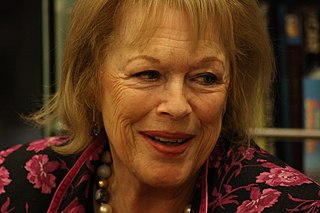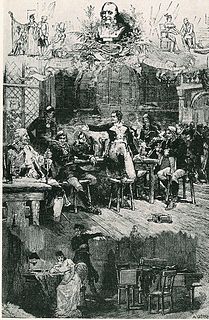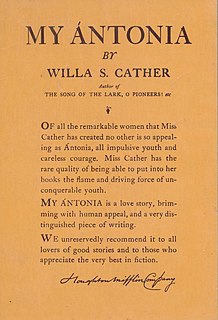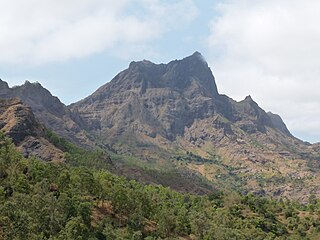
Antonia Minor was the younger of two surviving daughters of Mark Antony and Octavia Minor. She was a niece of the Emperor Augustus, sister-in-law of the Emperor Tiberius, paternal grandmother of the Emperor Caligula and Empress Agrippina the Younger, mother of the Emperor Claudius, and both maternal great-grandmother of the Emperor Nero. She outlived her husband Drusus, her oldest son, her daughter and several of her grandchildren.

Lady Antonia Margaret Caroline Fraser is a British author of history, novels, biographies and detective fiction. She is the widow of the 2005 Nobel Laureate in Literature, Harold Pinter (1930–2008), and prior to his death was also known as Lady Antonia Pinter.

Antonia Coello Novello, M.D., is a Puerto Rican physician and public health administrator. She was a vice admiral in the Public Health Service Commissioned Corps and served as 14th Surgeon General of the United States from 1990 to 1993. Novello was the first woman and first Hispanic to serve as Surgeon General. Novello also served as Commissioner of Health for the State of New York from 1999 to 2006.

The Tales of Hoffmann is an opéra fantastique by Jacques Offenbach. The French libretto was written by Jules Barbier, based on three short stories by E. T. A. Hoffmann, who is the protagonist of the story. It was Offenbach's final work; he died in October 1880, four months before the premiere.
Antonius or Antoníus is a masculine given name of Etruscan origin from the root name Antōnius as well as a surname. Antonius is a Danish, Dutch, Finnish, Latin, Norwegian, and Swedish name used in Greenland, Denmark, Norway, Sweden, Finland, part of the Republic of Karelia, Estonia, Belgium, Netherlands, Suriname, South Africa, Namibia, and Indonesia, while Antoníus is an Icelandic name used in Iceland.

Maria Antonia of Naples and Sicily, was the youngest daughter of Ferdinand, King of Naples and Sicily, and Maria Carolina of Austria. As the wife of the future Ferdinand VII of Spain, then heir apparent to the Spanish throne, she held the title of Princess of Asturias.

My Ántonia is a novel published in 1918 by American writer Willa Cather, considered one of her best works.
My Antonia is a 1995 American cable made-for-television drama film based on the novel of the same name written by Willa Cather, produced for the USA Network. The movie was directed by Joseph Sargent and starred Jason Robards, Eva Marie Saint, and Neil Patrick Harris. It was filmed in part at the Stuhr Museum in Grand Island, Nebraska.

The Antonia Fortress was a citadel built by Herod the Great and named for Herod's patron Mark Antony, as a fortress whose chief function was to protect the Second Temple. It was built in Jerusalem at the eastern end of the so-called Second Wall, at the north-western corner of the Temple Mount.

Maria Antonia of Austria was an Electress of Bavaria by marriage to Maximilian II Emanuel, Elector of Bavaria. She was the eldest daughter and only surviving child of Holy Roman Emperor Leopold I and his wife Margaret Theresa of Spain. She was the heir to the Spanish throne after her maternal uncle Charles II of Spain from 1673 until her death.

Antonia's Line is a 1995 Dutch feminist film written and directed by Marleen Gorris. The film, described as a "feminist fairy tale", tells the story of the independent Antonia who, after returning to the anonymous Dutch village of her birth, establishes and nurtures a close-knit matriarchal community. The film covers a breadth of topics, with themes ranging from death and religion to sex, intimacy, lesbianism, friendship and love.

Maria Antonia Ferdinanda of Spain was a Queen consort of Sardinia by marriage to Victor Amadeus III of Sardinia. She was the youngest daughter of Philip V of Spain and Elisabeth Farnese. She was the mother of the last three mainline Kings of Sardinia.
Maria Antonia is a feminine Portuguese given name from the root names Miriam and Antonius. Notable people referred to by this name include the following:
Antonia, Antónia, Antônia, or Antonía is a feminine given name and a surname. It is of Roman origin, used as the name of women of the Antonius family. Its meaning is "priceless", "praiseworthy" and "beautiful". Antonia is a Danish, Dutch, English, Faroese, Finnish, German, Italian, Norwegian, Polish, Romanian, Spanish, and Swedish name used in the United States, most of Canada, Mexico, Guatemala, Honduras, Nicaragua, El Salvador, Costa Rica, Western Panama, Cuba, Dominican Republic, Colombia, Venezuela, Guyana, Suriname, Ecuador, Peru, Chile, Bolivia, Argentina, Uruguay, Paraguay, Australia, New Zealand, Papua New Guinea, Indonesia, Philippines, Peninsular Malaysia, Singapore, India, Pakistan, Spain, Italy, Austria, Germany, Belgium, Netherlands, Poland, Romania, Bulgaria, Moldova, part of Serbia, Norway, Sweden, Finland, Denmark, Greenland, Estonia, Republic of Karelia, South Africa, Namibia, Botswana, Zimbabwe, Zambia, Malawi, Tanzania, Uganda, Kenya, South Sudan, Sudan, and Ethiopia.

Antonia is a plant genus in the family Loganiaceae.

The Serra do Pico de Antónia is a mountain range in the centre of the island of Santiago in the Cape Verde archipelago. It contains the Pico de Antónia, at 1,392 m (4,567 ft) the highest point of the island. It is protected as a natural park, covering 28.73 km2 (11.09 sq mi). The natural park covers the connected mountain ranges of Serra do Pico de Antónia and of Rui Vaz.

Archduchess Maria Antonia of Austria German: Maria Antonia, Erzherzogin von Österreich-Toskana was a daughter of Archduke Leopold Salvator of Austria and Infanta Blanca of Spain. She was member of the Tuscan branch of the Imperial House of Habsburg, an Archduchess of Austria and Princess of Tuscany by birth. In 1919, after the fall of the Austro Hungary Empire, she moved with her family to Spain. In 1924 she married Ramón de Orlandis y Villalonga, a Spanish aristocrat. When she became a widow during the Spanish civil war Archduchess Maria Antonia moved permanently to South America where she remarried.

Myrcia guianensis (pedra-ume-caá) is a species of the flowering plant family Myrtaceae. It is found in South America.














